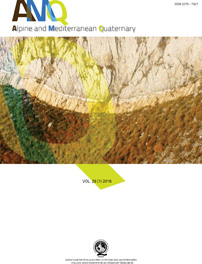THE LITTLE-KNOWN EARTHQUAKE OF 1643 IN SICILY
Main Article Content
Abstract
With earthquakes being most common to eastern Sicily (Mw >7.0), the mountainous region northwest of Mount Etna (Madonie-Nebrodi range) is affected by sparse, low magnitude seismicity (Mw≤ 5.0), with macroseismic intensities ≤ 7-8 MCS. Among these, the 1643 event is currently rated with an intensity of 6-7 MCS degree, related to only one locality (Troina, Enna province). New information retrieved from a coeval manuscript discovered in the National Library of Spain in Madrid, together with other unknown documents, allows now to provide a reliable damaging scenario for the mesoseismic area of the 1643 sequence. News concern five localities, accounting for an epicentral intensity of 8 MCS and a related Mw 5.6, which is the strongest of the region. In some villages, the 1643 effects were even higher than in 1693, the catastrophic earthquake that razed to the ground dozen of towns in eastern Sicily, with damage from Malta to Palermo. The E-W elongated damage area fully matches the normal-fault plane solution of the focal mechanisms of two recent earthquakes falling close to the 1643 epicenter, suggesting thus a similar trend for the seismogenic structure. The earthquake was also followed by an unreported activity of Mount Etna which was dormant since 1638.
Article Details
Issue
Section

This work is licensed under a Creative Commons Attribution-NonCommercial-NoDerivatives 4.0 International License.
The Author grants usage rights to others using an open license (Creative Commons or equivalent) allowing for immediate free access to the work and permitting any user to read, download, copy, distribute, print, search, or link to the full texts of articles, crawl them for indexing, pass them as data to software, or use them for any other lawful purpose.

